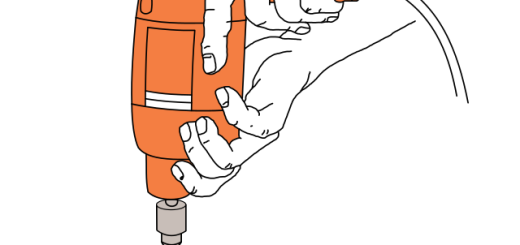Police Scanner Codes: what does it all mean?
Whether you have been listening to a police scanner for five minutes or ten years, one thing is for certain. You have undoubtedly witnessed a ton of police scanner codes. At times, you may feel like the whole experience can be like a bowl of alphabet soup, with all of the numbers, letters, and codes that are broadcasted constantly. In order to understand exactly what you are listening to, you need to understand all of the information that is being tossed at you at any given moment. Have no fear. I am here to walk you through this. It is really not so tough once you get the hang of it. So, let’s start to break all of this stuff down, shall we?
What’s in a name?
Perhaps you are old enough to remember the circa late 1970’s, early 1980’s television show “CHiPs” which followed the daily lives of officers Frank Poncherello and John Baker as they patrolled the Los Angeles freeways as California Highway Patrol officers. You may recall they always announced themselves over the police radio on their motorcycles as “L.A.-15-7-Mary-3 (John) and L.A.-15-7-Mary-4 (Ponch). In this case you are hearing a unit identification. In this case, L.A. is the dispatch (Los Angeles communication center), the 15 represents their particular station, which is central Los Angeles. The 7 stands for their particular beat, and the Mary 3 and Mary 4 represent their individual motorcycle unit numbers. “Mary” is used in place of “M” for motorcycle.
What’s your name again?
When you turn on a police scanner or listen online, you are going to hear some version of a unit identifier schema for your local law enforcement. Now, these are not standard across all law enforcement agencies. Each agency has its own version of a unit identifier. If you live in an area with multiple agencies serving the various cities and counties in your locale, this can become a full-time job keeping all of this straight. However, it is necessary to have a good idea of all agencies’ unit identifiers for your area because you will come into contact with these daily. If you don’t know the unit identifier for a patrol officer versus one for a homicide detective, you could miss out on some exciting communications. The best way to find the unit identifiers for agencies in your area is to do a Google search for your local law enforcement agency name and the words “unit identification”. With any luck, this should bring up a scanner enthusiast web page dedicated to local law enforcement in your area. Search the site for unit identifier information. This is usually easiest if you live in a larger city with larger public safety agencies. If you live in a smaller city, you may have to do a bit more digging.
May the Source be with you
If the above search fails, another good resource to check is the Radio Reference website. Radio Reference is the largest source of information for scanner and radio enthusiasts. Simply navigate there and click on “Databases” at the top of the screen, and navigate to your state, and then your county. Once there, click on the “wiki” to see if there is any unit identifier information for your area. If this turns up nothing, then a good idea would be to go to the “forums” section of the website for your state and create a new post asking if anyone in the community has the unit identifier information for the public safety agency in your area. Since this is a huge radio enthusiast community, it is likely that someone will either have this information, or know where to point you to find the information.
Don’t be afraid to be another Yahoo
Lastly, if the above two searches turns up nothing, you should look to see if there is a Yahoo group dedicated to scanning the public safety agencies in your area. If there is a dedicated group for scanning your area, then it is likely that someone will have the unit identifiers for the law enforcement agencies in your area.
When you do locate the unit identifier information for the law enforcement agencies in your area, it would be a good idea to either bookmark this information on your computer, or print it out and store it near your scanner. You will likely be referring to this often until you learn the basic unit identifiers used in your area.
10 – 4 Good Buddy!
Other information that you will need to effectively monitor a police scanner is the ten codes and eleven codes for your area. You are probably familiar with the ten code “10-4” which simply means “acknowledged” or “understood”. However, this is just one of many codes that make up the ten and eleven codes. There are a lot of ten and eleven codes in use, and many are not standard across public safety agencies. Each localized agency will have its own subset of the ten and eleven codes that are in use for that area, and they may differ slightly or significantly. In my city for example, the sheriff, the city police, and many of the smaller surrounding police agencies all use slightly different ten and eleven codes to fit their needs. This is why it is important to repeat the same searches outlined above for the ten and eleven codes used in your area. Again, it will be important to either bookmark this information or print it out to have it handy at all times. You will be referring to these constantly.
You are being penalized
It is also important to do a search for the common penal codes used in your state. Some examples of penal codes in use are a numeric codes for crimes such as disturbances, robbery, burglary, theft, forgery, fraud, and battery. Each state has its own penal code, and these codes are used in the daily communications between law enforcement officials. You can most likely obtain common penal codes used in law enforcement communications by searching for a scanner website for your area. Often times these sites will have links to common codes used. In addition to the ten and eleven codes, they often will list common penal codes used in communications. You should try each of the searches recommended at the beginning of this post for this information. One of the aforementioned searches should likely turn up the information. If this fails, you could visit a law library, as they will have this information in book form.
Calling all Cars!
In a day of scanner listening, you are also likely to hear any number of state vehicle codes. Vehicle codes cover numerical codes for vehicle related crimes such as hit and run, drunk driving, stolen vehicles, vehicle tampering, driving without a license, and parking violations to name just a few. Each state will have its own vehicle codes, and you should do the searches mentioned above to locate the vehicle codes used in your area. If the searches above do not uncover the vehicle codes used in your area, then a trip to the law library should also produce the vehicle codes for your area. These codes are used with such frequency that you should obtain the common vehicle codes used in your area and either bookmark or print these codes out. These should also be stored in close range to your scanner due to their frequency of use.
Yep, there’s a code or that
Since there are state vehicle codes, I bet you can imagine that there is also a whole slew of state welfare and institutions, and health and safety codes, as well. Indeed there are, and they range from welfare and institutions codes such as “danger to self or other (mental issues)” all the way to health and safety codes such as “possession of a controlled substance” and “manufacture of a controlled substance. Again, please know that each state will have its own welfare and institutions, and health and safety codes. If you perform the searches recommended at the beginning of this post, you will likely uncover the main welfare and institutions and health and safety codes used in your state. If you are having difficulty obtaining these codes, then a trip to a law library should produce the codes for your state.
What is your true disposition?
Some law enforcement agencies may also use what are called disposition codes. These are generally codes that provide a status of the result of a radio call. For example, some disposition codes used by my local law enforcement agency are “A – arrest made”, “K – no report required”, “R – report made”. Your local law enforcement may or may not use these codes. If disposition codes are used by law enforcement in your area, then the searches listed earlier in this article will likely turn these up.
Codes, codes, everywhere are codes!
By now, your head may be spinning at the thought of keeping all of these codes straight in your mind. I can completely identify with that. When I first started listening to police scanners, I had a mountain of paperwork next to me so that I could identify which agencies and what type of units were communicating, as well as what all the codes were that were willy-nilly being thrown about. At first, it was frustrating to keep all of this straight. However over time, you will master these, and you will rely on that mountain of paperwork less and less. I would hate to scare you, but I can speak police codes fluently now after all these years, and I hardly ever refer to my mountain of paperwork anymore. I have a feeling that with enough time and practice, you will be speaking fluent police code as well.
There may be a cure!
If you find you are having a tough time with these codes and it all feels like Greek to you, then waiting may be the magic bullet. A recent NPR discussion mentioned that some police agencies and dispatch centers are relying less and less on formalized police codes in favor of more conversational speech. Many of the codes were originally introduced for formality and communication brevity. However, the discussion cited the reasoning for phasing out some formal codes was to aid law enforcement officials that are having a tough time remembering all of the codes. Another reason given for less use of code was that many code designators go unused. So, keep your head above the water if you feel like you are drowning in code. You will need it now, but you may be hearing less of it in the distant future. Until next time, Happy Listening to all!



Mary-3 was Jon
You are correct! I fixed the post. Thanks!
LA 15 7 Mary 3 and 4. Ponch was 4, John was 3
Great catch! I fixed it. 🙂